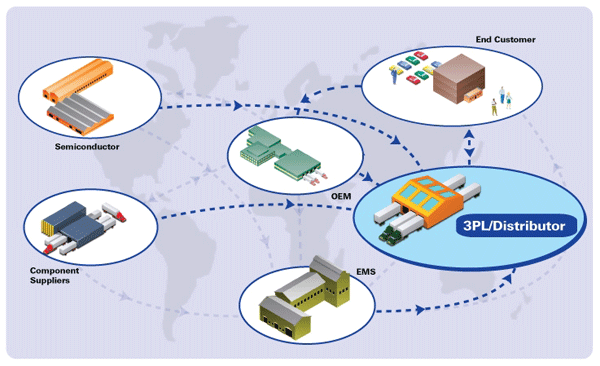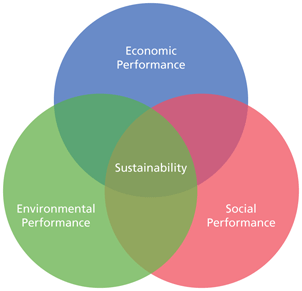Background
According to Christopher (2005) logistics is the process of strategically managing the procurement, movement and storage of materials, parts and finished inventory in order to achieve efficiency when it comes to the fulfilment of orders. This means that the company will be able to make a profit but at the same time improve customer satisfaction. The key concept is the strategic management of resources and finished products. In order to succeed in a highly competitive environment companies must focus on at least three major issues when it comes to logistics management and these are a) third-party logistics (3PL); b) corporate social responsibility (CSR); and c) supply-chain design.
Problem Statement
While many are well aware of the various principles of logistics management and the need to increase revenue while reducing overhead costs, achieving cost-efficiency in the production process is easier said than done. In the case of the Qatar cement factories there is a need to re-examine principle of 3PL, CSR, and supply-chain design in order to solve problems regarding low quality products, late delivery of products to showrooms and warehouse, and the risk associated with selling sub-standard cement and its negative implications to the Qatar economy.
Industry Context
The Qatar economy is booming for the past few years. As a result there is a great demand for cement to further improve infrastructure and fuel economic growth. There are three major cement companies in the country and these three are located in one place. The said cement companies are situated far from the nearest city, approximately 120 kilometres away. Thus, it will require 15-18 hours of travel time for each truck to move from factory to their customers. The queue lines are long and this added to the delays when it comes to delivery schedules.
There are numerous outcomes if Qatar’s cement industry could not solve the problems that were outlined above. Firstly, Qatar cement companies could not give their customers what they really wanted which is value for money. If this trend will continue then it is possible that the cement industry in Qatar will disappear in the near future, replaced by exported cement from other countries. Secondly, Qatar cement companies are leaving behind a significant amount of carbon footprint by wasting so much fossil fuel in transporting materials and products back and forth from the factories to the warehouses. Finally, Qatar’s cement industry are not committed enough to explore and utilize current technologies such as IT, that will help them improve their production and delivery systems.
Analysis
Qatar cement companies must begin to appreciate the importance of 3PL to improve their operational capabilities. One of the most important principles in 3PL is the idea that the use of an external supplier can guarantee more customised offerings and encompass a broad number of service functions (Murphy & Poist, 2000). In the case of the three cement companies, hiring the services of an external supplier will allow them to have someone to take care of their transportation needs. Since an external supplier specialises in moving freight then they can assure Qatar’s cement factories that they will be able to bring their finished products on time to warehouses and showrooms.
Using 3PL will allow these companies to unload some of their problems that have nothing to do with making cement. Their core business is making cement and not delivering it to their customers. It makes perfect sense therefore to tap a specialist such as a transportation expert to handle this aspect of the business so that they can focus on more important issues such as making high-quality cement and finding out the constraints that and problems that prevented them from doing so. Moreover, the efficient work of a specialist will reduce their carbon footprint.

The next thing that the cement industry must focus on is supply-chain design, specifically process-oriented design for the entire company, based on the efficient use of technology to eliminate trade-off between better service and economies of scale (Abrahamsson et al. 1998). The correct use of IT infrastructure will help Qatar’s cement companies to make improvements when it comes to economies of scale and coordination and control (Abrahamsson et al. 1998). Thus, the company can take in more orders from the customers and yet will not feel overwhelmed from the sudden increase in demand. The company will also be able to track down each component of the production cycle, from receiving orders, the creation of the product, and to the delivery of the same. The use of technology such as bar codes, radio frequency tracking devices can help in achieving this goal.
Finally, Qatar’s cement companies will benefit greatly if they will observe Corporate Social Responsibility. In the 21st century, customers and consumers are more demanding when it comes to the preservation of the environment. In other words they will invest or purchase products from manufacturers who can demonstrate their concern for the environment. In the case of the Qatar cement companies they must be mindful of the pollution they are causing because of the length of time needed for their trucks to load and unload finished products due to long queue lines. This means that the extended use of the trucks will consume more fuel and this will result in more wastage when it comes to fuel consumption. These companies must always consider the triple bottom line: environment, society, and economy.

In every corner of the globe, CSR is an important issue. But it can be argued that in Qatar, the people cannot afford to ignore CSR because this is a country with limited natural resources. If businessmen will fail to take responsibility for their actions by developing business processes that will not harm the environment, then in the near future the citizens of this country will feel the backlash of nature. Pollution and non-sustainable practices can be very harmful in the long run. It does not make sense to make money in the present only to use the same amount of money to rehabilitate the environment and the people affected by pollution and other environmental problems in the future.
Conclusion
The challenges faced by Qatar cement companies can be addressed using principles from 3PL, supply-chain design, and corporate social responsibility. It is interesting to find out that adherence to principles of logistics management such as the use of external suppliers, improving process-oriented design and becoming more socially responsible can improve the performance of the company. This is very much evident when it comes to Qatar’s cement industry. In the attempt to eliminate wastage of fuel and reducing carbon footprint and therefore hiring an external supplier did not only help in saving the environment it also allowed for faster delivery of products. The same can be said if Qatar’s cement companies will use technology to improve their production, they will have efficient use of resources, which can help them save money but at the same time the presence of a much improved IT infrastructure can help them provide quality products and therefore increase customer satisfaction.
References
- Abrahamsson, M., S. Brege, & a. Norrman. (1998). Distribution channel re-engineering – organizational separation of the distribution and sales functions in the European market. Transport Logistics, 1 (4): 237-249.
- Chopra, S. and Sodhi, M. (2004) Managing Risk to Avoid Supply Chain Breakdown. MIT Sloan Management Review, 46 (1) : 53-61
- Christopher, Martin (2005). Logistics and Supply Chain Management – Creating Value-Adding Networks. 3rd edition, Prentice Hall , Ch1, pp 5
- DNV: Det Norske Veritas. (2009). “Triple Bottom Line Reporting.”
- Halldorsson, A. (2009). Logistics Management: Session 1: Logistics operations & Performance. University of Southampton.
- i2.com. (2009). “Hight Tech Closed Loop Supply Chain Management Software Solutions.”
- Lieb, R. (2005). The 3PL Industry:Where It’s Been, Where It’s Going. Supply Chain Management Review. 20-27.
- Sept, L. (2008) Taking Supply Chain Responsibility. Supply Chain Management Review, 2008: 14-21